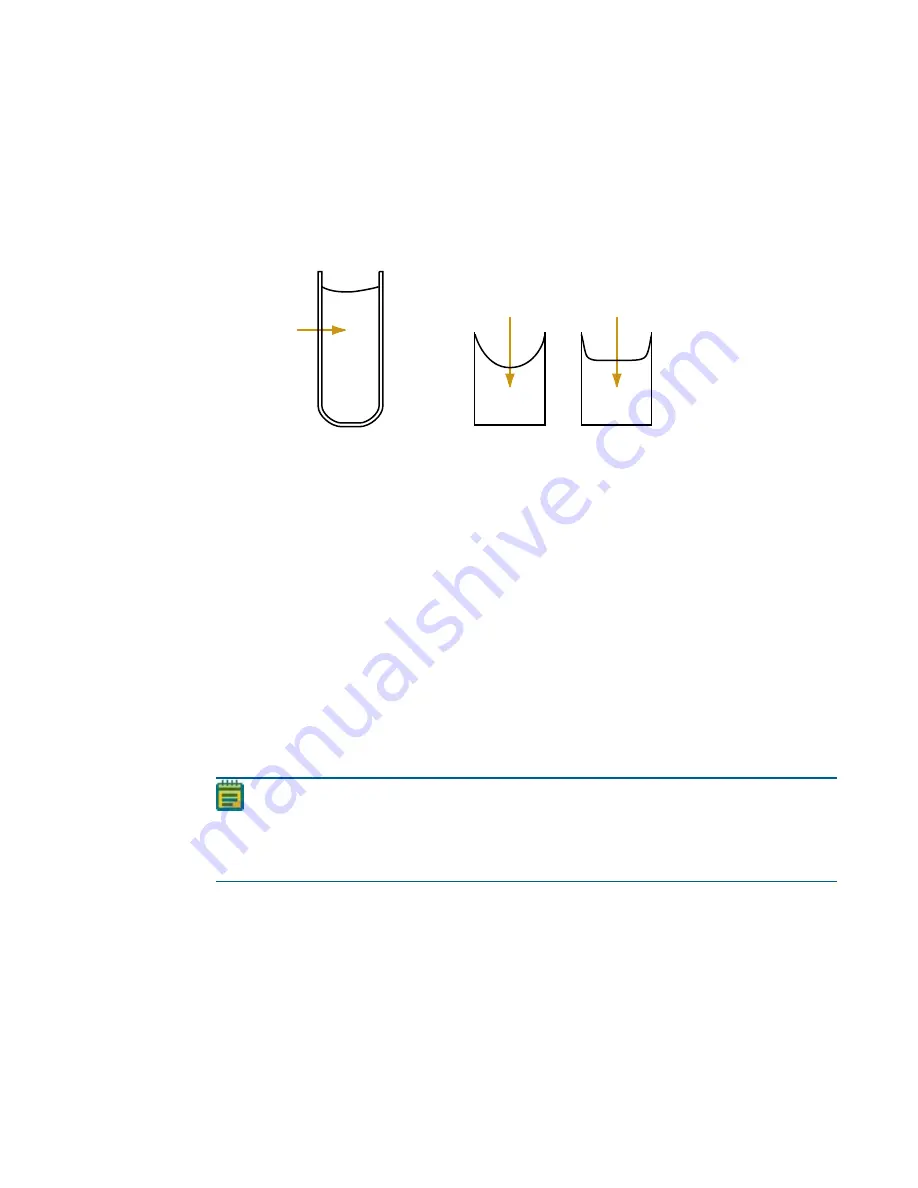
Chapter 5: Read Modes and Read Types
0112-0102 E
26
In a plate, pathlength is dependent on the liquid volume, so absorbance is proportional to
both the concentration and the pathlength of the sample. Standard curves are often used to
determine analyte concentrations in vertical-beam photometry of unknowns, yet errors can
still occur from pipetting the samples and standards. The PathCheck technology determines
the pathlength of aqueous samples in the plate and normalizes the absorbance in each well
to a pathlength of 1 cm. This way of correcting the microwell absorbance values is accurate
to within ±4% of the values obtained directly in a 1 cm cuvette.
Horizontal
light path
Vertical light path
Cuvette
Microplate wells
PathCheck technology normalizes the data acquired from an Absorbance read mode
Endpoint read type to a 1 cm pathlength, correcting the OD for each well to the value
expected if the sample were read in a 1 cm cuvette. The instrument uses the factory installed
Water Constant to obtain the 1 cm values. For the SpectraMax M series you can read a
cuvette that contains deionized water or buffer to use the Cuvette Reference correction
method (typically not necessary when you use aqueous solutions with minimal alcohol, salt,
or organic solvent content).
Water Constant
The PathCheck technology is based on the absorbance of water in the near infrared spectral
region (between 900 nm and 1000 nm). If the sample is completely aqueous, has no turbidity
and has a low salt concentration (less than 0.5 M), the Water Constant correction method is
sufficient. The Water Constant is determined for each instrument during manufacture and is
stored in the instrument.
Note:
The Cuvette Reference correction method that the software uses with the
PathCheck Pathlength Measurement Technology is different from the reference read
of a cuvette that occurs when you click the Ref button in the Cuvette Set section tool
bar.
Use the Cuvette Reference correction method if the sample contains an organic solvent such
as ethanol or methanol. When you add a non-interfering solvent to the aqueous sample, the
water absorbance decreases proportionally to the percentage of organic solvent present. For
example, 5% ethanol decreases the water absorbance by 5% and results in a 5%
underestimation of the pathlength. To minimize the error, put the same water/solvent
mixture in a cuvette and use the Cuvette Reference.
















































